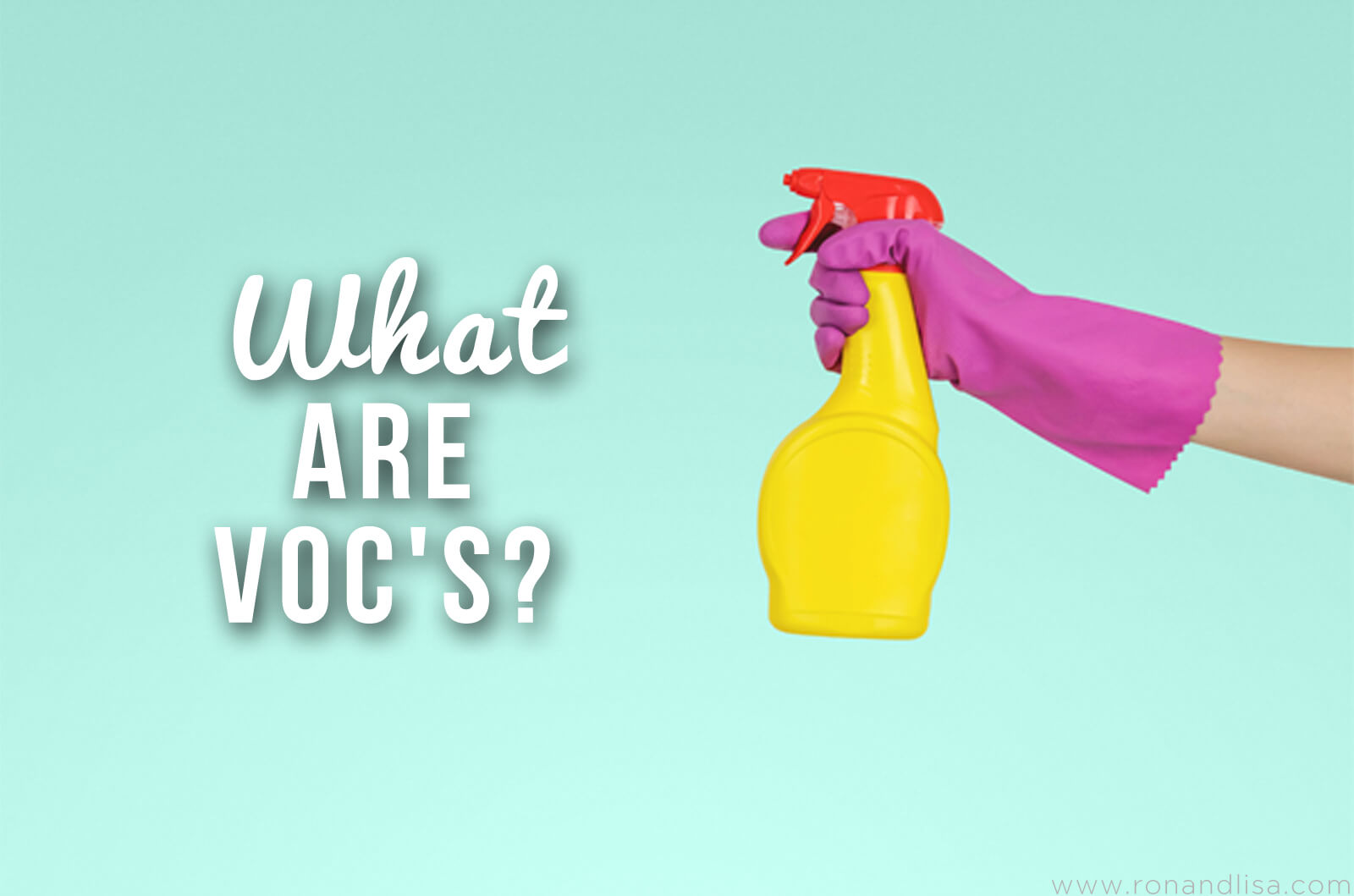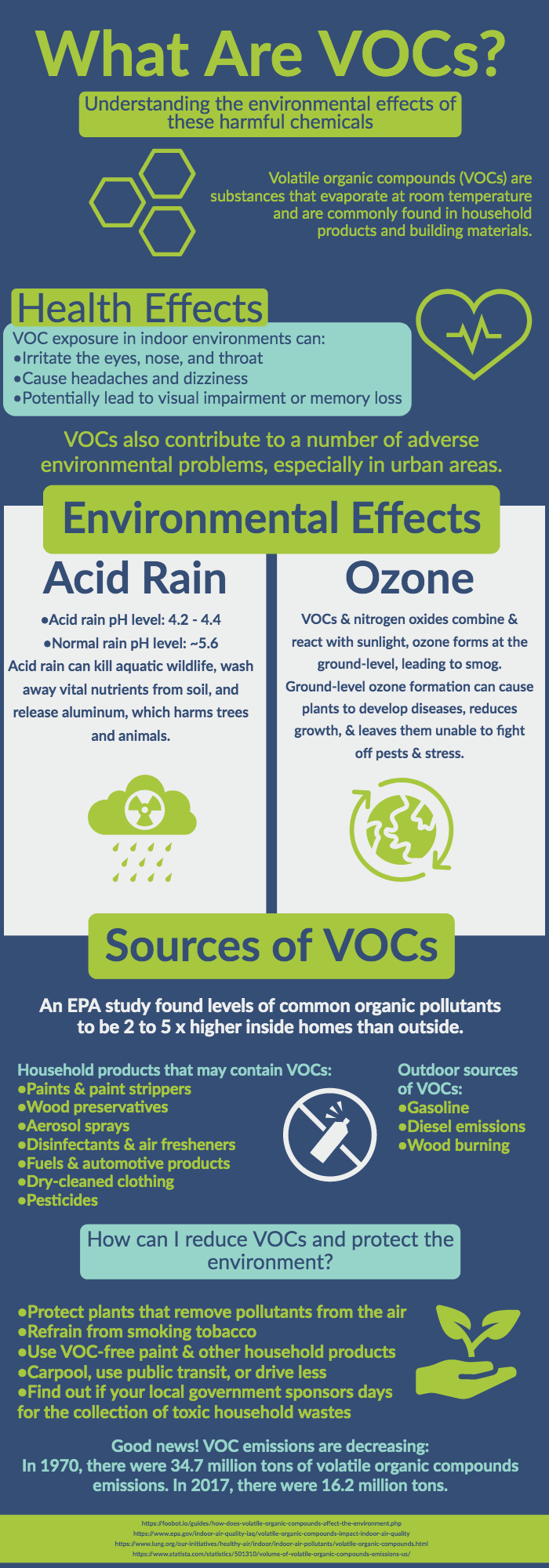
Understandably, you want to do everything you can to protect your family from harm, which often begins right at home. You might encourage your kids to make healthier food choices throughout the day, for instance, but this alone won’t protect their overall well-being. There are numerous toxins lurking within your own home that you’re likely completely unaware of.
Volatile organic compounds, or VOCs, are the most common type of harmful chemicals that are cause for concern in our homes today. VOCs can be found in a variety of products – from building materials to cleaning agents. VOC’s are prevalent indoors and can be incredibly dangerous to our health.
VOCs are substances that evaporate, or off-gas, at room temperature. Because of the way they evaporate, these chemicals can easily make their way into the air we breathe, leading to major health problems. In indoor environments, VOCs can cause eye, nose, and throat irritation, as well as headaches, dizziness, visual impairment, and even memory loss. The long-term health effects of VOCs can be more serious and include cancer.
VOCs also contribute to environmental effects such as acid rain and ground-level ozone formation, particularly in urban areas. Acid rain washes away vital soil nutrients, releases harmful aluminum, and kills marine life, wildlife, and plants. Ground-level ozone formation can do significant damage to the environment, too, as it can cause plants to become sick and unable to thrive. In other words, VOC’s can have a profoundly negative impact on all lifeforms while harming the planet at-large.
Most of us like to think of our home as a safe haven, but staying inside could be hazardous to our health. Common organic pollutant levels have been found to be two to five times higher indoors than outdoors — largely because toxins like VOCs are found in a number of household items. Paints, paint strippers, adhesives, wood preservatives, aerosol sprays, disinfectants, air fresheners, cleaning and automotive products, dry-cleaned clothing, pesticides, and much more often contain VOCs. You might not know how to recognize VOCs on an ingredient label, but the most common VOCs you’ll spot include acetone, butanal, benzene, ethanol, toluene, formaldehyde, terpenes, and others.
Fortunately, VOC emissions are decreasing. Back in 1970, there were 34.7 million tons of VOC emissions. In 2017, there were 16.2 million tons of VOC emissions. However, we still have a lot of work to do. Aside from swapping out VOC-laden products for more health-focused alternatives (like nontoxic paints or green cleaning agents), you can do your part to reduce or eliminate VOCs by ditching an unhealthy smoking habit, carpooling and instead, opting to use more sustainable forms of transportation, protecting plant life, or participating in government-sponsored toxic household waste collection days.
Related Articles:
Who Says You Can’t Have Christmas In January?
Two Deadly Intruders: One Escape Plan. Are You Prepared?
A Tribute to Helmut Ziehe: Visionary & Founder of IBE, USA
3 Feng Shui Tips for Peace, Harmony & Joy in Your Life
FEELING STUCK? 3 Simple Ways to Cleanse the Energy at Home
PAIN IN THE A’S: Asthma, ADHD, Allergies & Autism
TIME OUT! Why Product Recalls Belong in the Naughty Corner
Feng Shui for New Buildings: 7 Essential Tips
Healthy Makeover: Home Edition – The RESULTS!
6 Tips to Decorate a Stress-Free Home
Stay Calm: Add Some OM to Your Home with These 5 Easy Steps!
{Healthy} Home Improvement: Tips & Tricks for Your Next Project
The Ultimate Guide to Natural Mold Removal
How to Make Your Home More Allergy Friendly
4 Places Germs Are Lurking in Your Home
The Healing Powers of [So Well Made] Himalayan Salt Lamps
How BPA Can Disrupt Sexual Function & Reverse Sexual Behavior
The Ultimate Houseplant Cheat Sheet
Toxic-Free Cleaning Hacks for a Healthy Home
Spring Cleaning Tip: 3 Toxic Products You Should Toss!
8 DIY Repellent Recipes for Household Bugs
How to Choose A Healthy Protein Powder
4 Tips for Rescheduling Postponed Travel Plans
Changing personal habits isn’t always easy, but making the switch to eco-friendly, natural and healthy practices is always worth the extra effort. Now that you know the harms that VOCs can cause, you can take proactive measures to avoid dangerous products when shopping, cleaning or going about your other daily activities; protecting both your family, our planet, and your home for yourself and our future generations to come.




Are wood burning fireplaces sources of VOCs?